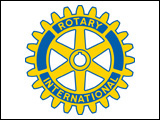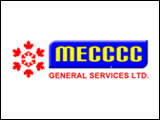Last week in this column I dealt with the challenge all of our towns and cities have: how to deal with the phosphorous in our liquid waste-water stream. Here I want to focus on how to turn this present pollutant into a valuable resource.
Phosphorous is essential to life. Without phosphorous a plant will not grow. From time immemorial, farmers have known that applying manure to land enhances plant growth. I well remember riding with my father-in-law, he would get a whiff of manure: “It smells like money” he would say. Prior to the modern scientific era, farmers did not know what in manure promoted plant growth, but they knew that the reliable way to increase crop growth was the application of manure.
Today we know that of the minerals plant need for healthy, vigorous growth – the minerals most likely to become deficient when the land is cropped – are nitrogen and phosphorous.. Science identified these deficiencies about 150 years ago, and during the inter-war period industrialists working with scientists found ways of isolating and distributing these minerals in concentrated form. Since the 1950s we all have become increasingly dependent on these concentrated mineral fertilizers – farmers directly, and we who all depend on farmers for food are indirectly dependent on these phosphate fertilizers.
So we now find ourselves part of a massive system that:
- mines phosphate rock,
- trucks this phosphate to farmer’s fields where it nourishes crops,
- removes the phosphate from the fields through harvest,
- trucks the harvested food to the cities and towns where it is consumed,
- deposits the phosphate into our toilets where it is flushed, and
- makes its way to our lakes and waterways were it becomes a serious pollutant.
Reflection makes it obvious that this system is neither sustainable nor rational. For one thing there is a limited supply of phosphate to be mined. The most accessible phosphate has already been used up (google peak phosphate). We will experience shortages. We just don’t know when. Furthermore all that transportation is inefficient, and possible only because of cheap fuel. And finally how long can we continue to bury phosphorous we flush down our toilets as a pollutant?
But it need not be that way. There are alternatives. There are ways of removing the phosphorous from our waste stream and applying it to our land as a fertilizer. It just needs the political will. And what is excites me today is that the towns of Landmark and Niverville seem to have the political will to explore one of those alternatives. At this time the technology is not mature more work is needed, but a direction seems to be set, and these two towns are to be commended for that.
For the curious, what Landmark and Niverville are doing, is encouraging the growth of swamp vegetation in these lagoons. The plants, as they grow, will extract and accumulate nutrients (also called pollutants), from the water. When the plants are mature, they will be harvested and processed, either to make a fuel or to make compost which can then be applied as a fertilizer on agricultural land.
This floating cattail bioplatform technology is by no means the only technology that could make our participation in the phosphorous cycle more rational and sustainable, but it moves in the right direction.



